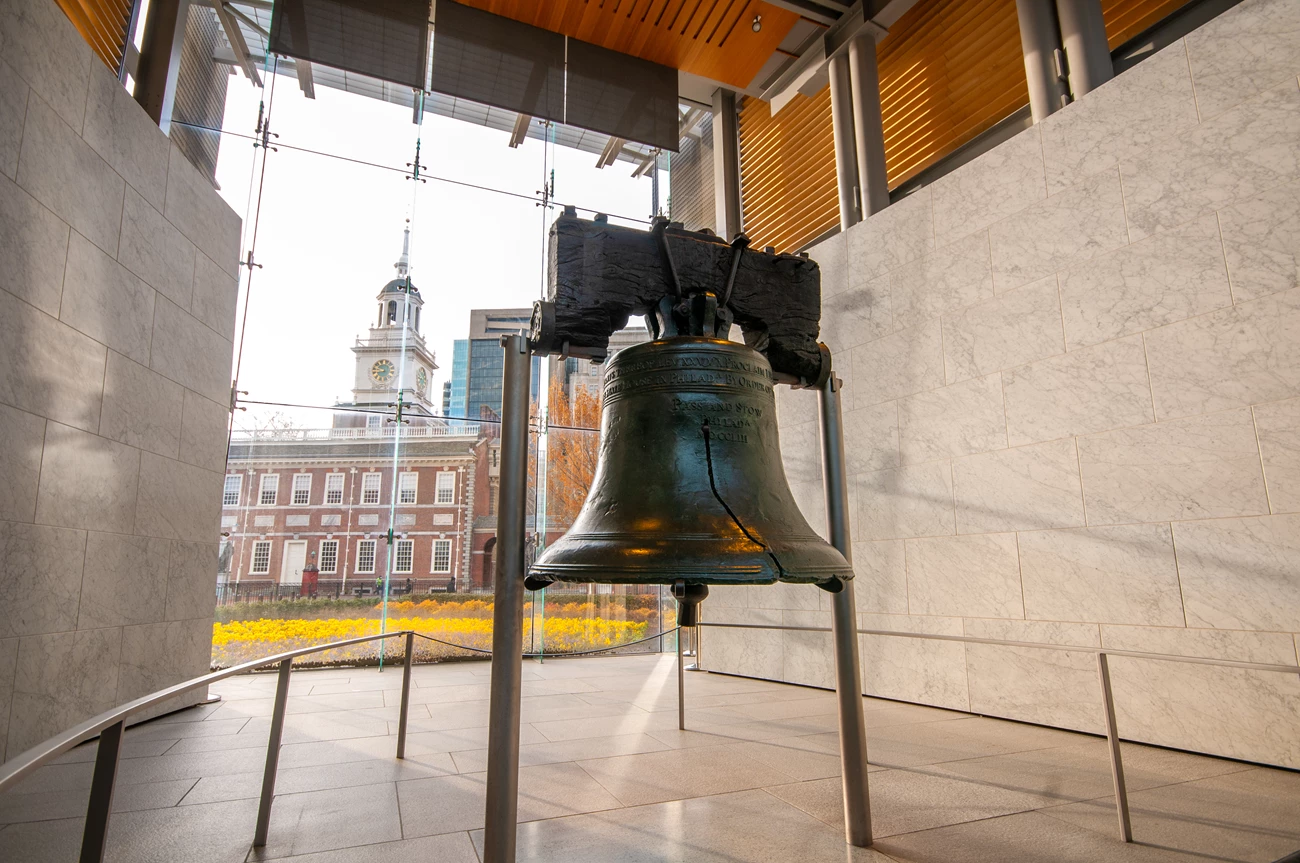
NPS photo The Liberty Bell bears a timeless message: "Proclaim Liberty Throughout All the Land Unto All the Inhabitants thereof" Go beyond the iconic crack to learn how this State House bell was transformed into an extraordinary symbol. Abolitionists, women's suffrage advocates and Civil Rights leaders took inspiration from the inscription on this bell. Plan your visit to the Liberty Bell Center to allow time to view the exhibits, see the film, and gaze upon the famous cracked bell. No tickets are required and hours vary seasonally. From Signal to Symbol The Crack The Inscription The Meaning Bell Facts Proclaim LIBERTY throughout all the Land unto all the Inhabitants thereof Lev. XXV X The information on the face of the bell tells us who cast the bell (John Pass and John Stow), where (Philadelphia) and when (1753): The bell weighed 2,080 lbs. at order. It is made of bronze. It's 70% copper, 25% tin and contains small amounts of lead, gold, arsenic, silver, and zinc. The bell's wooden yoke is American elm, but there is no proof that it is the original yoke for this bell. While there is evidence that the bell rang to mark the Stamp Act tax and its repeal, there is no evidence that the bell rang on July 4 or 8, 1776. Additional Information Lesson plans about the Liberty Bell are available on the park's "For Teachers" page. "The Liberty Bell: From Obscurity to Icon", a Teaching with Historic Places lesson plan, is also available on the web. There are two other bells in the park today, in addition to the Liberty Bell. The Centennial Bell, made for the nation's 100th birthday in 1876, still rings every hour in the tower of Independence Hall. It weighs 13,000 lbs. - a thousand pounds for each original state. The Bicentennial Bell was a gift to the people of the United States from the people of Great Britain in 1976. That bell is currently on display in the Benjamin Rush Garden at 3rd and Walnut Streets. |
An official website of the United States government
Here's how you know
Official websites use .gov
A
.gov website belongs to an official government
organization in the United States.
Secure .gov websites use HTTPS
A
lock (
) or https:// means you've safely connected to
the .gov website. Share sensitive information only on official,
secure websites.
